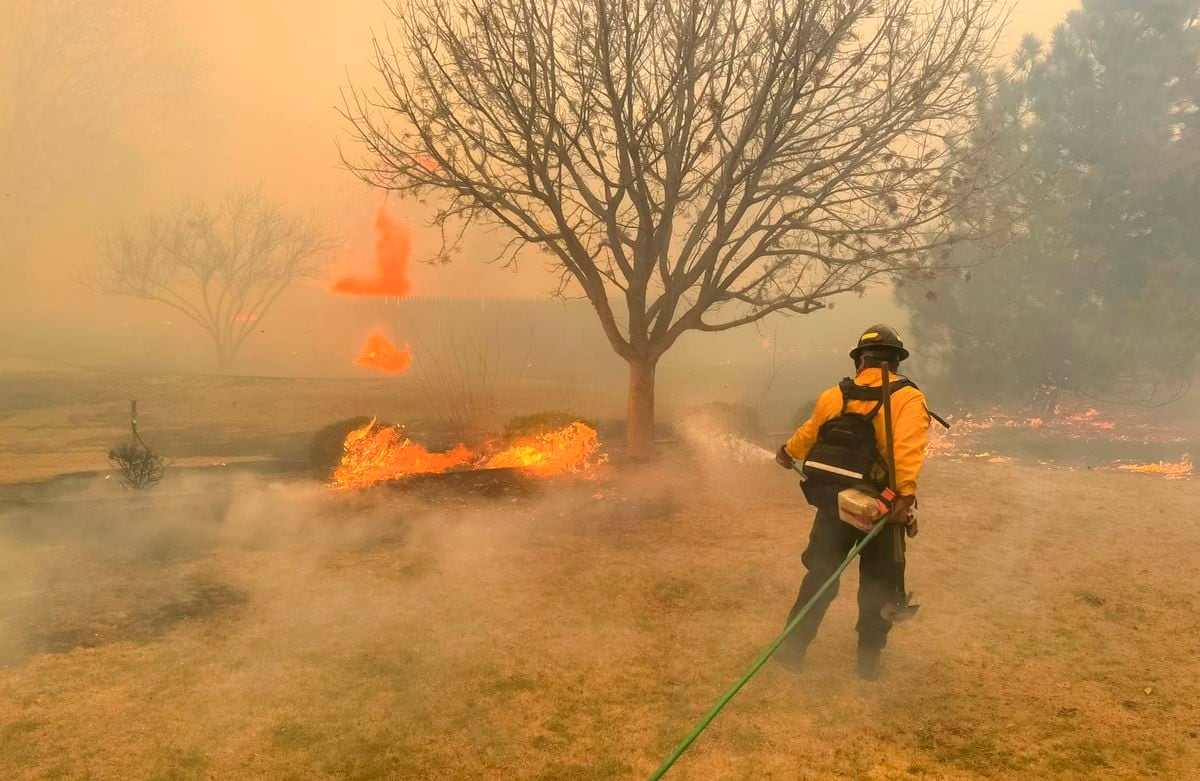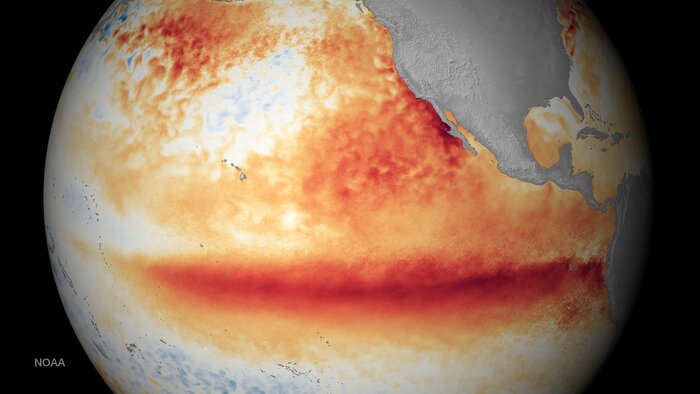Mother and calf of southern right dallena Nicolas Lewin (Whale Conservation Institute)
EL PAÍS offers the América Futura section for its daily and global informative contribution on sustainable development. If you want to support our journalism, subscribe here.
Warming oceans affect the survival of the southern right whale and impede the recovery of their populations. These are some of the conclusions of a study led by researchers from the Whale Conservation Institute (ICB), Ocean Allianceand a group of international collaborators, which describes for the first time the effect that climate change has on the survival of females, which breed on the southwest Atlantic coast, from Brazil to southern Argentina.
The work —part of the doctorate of Macarena Agrelo, biologist and principal investigator in the area of ecology, populations and population dynamics of the ICB— shows that in the years after the El Niño phenomenon, in which the waters are warmer, the mortality rate is four or five times higher than in the neutral or in which La Niña occurs. characterized by colder waters.
The data is relevant because currently the United Nations agency in charge of weather forecasts has warned that there is an 80% probability that El Niño will begin between July and September, which will cause an increase in global temperatures, droughts and rainfall in different regions of the world.
It is estimated that the population of southern right whales is approximately 5,500 individuals and the probability of that number increasing falls in the current context of global warming. The research projected population growth until the year 2100, considering fertility and reproduction parameters in different scenarios based on global predictions about the frequency of El Niño events. "We saw that, if we don't consider climate change, and the population grows at 7%, we would reach a population of 30 individuals in 2070," says Agrelo. And if you look at the effect that global warming had in the last 50 years, the population would not reach that value.
A southern whale and its feces. Nicolas Lewin (Whale Conservation Institute)
The projection is at the theoretical level, without weighing other mortality effects such as pollution, collision with ships or other threats. "If we consider that the events are going to be more frequent and more intense, population growth slows down more and more," says Agrelo. As a result, the effect of climate change on whale survival will be smaller and mortality will be greater.
In years after El Niño, scientists observed that a higher percentage of the population is not sighted, especially females who did not return to Peninsula Valdes despite frequenting the area a lot. "That makes you think those whales died," says the scientist. Females suffer more from the decrease in food because after gestation and lactation they require large amounts to recover from the energy investment made.
For the study, five decades of information collected through the photoidentification of each whale of Península Valdés were analyzed. To calculate survival, the life history of 1,380 females from a database of approximately 4,100 individuals was used. Its conservation, explain from ICB, is fundamental to mitigate global warming.
Whales are considered to be the engineers of ecosystems because they help maintain healthy life in the ocean. They have feces very rich in iron and other nutrients that derive from the consumption of krill, a crustacean in the South Atlantic and that transport it over great distances and in several directions, fertilizing and promoting biodiversity.
"They are the forests of the oceans, they capture in their large biomasses as much carbon as thousands of trees," says Agrelo.
Whale Conservation Institute
One by one
Since 1971, and uninterruptedly (except in 2020 due to the pandemic), the ICB and Ocean Alliance carry out annual monitoring of whales off the coast of Chubut, through aerial surveys. The database with the whales identified one by one is so valuable that it allows us to know how the population changes over time and how climatic phenomena affect it. These mammals can be recognized individually through the pattern of calluses on the head, which is unique just like the fingerprint of a human being.
In the beginning, the photos were taken with cameras with roll and the photoidentification was done manually through a physical catalog; Currently the images are digital and the technique is done with the help of software. "We celebrate 50 years of data. It is a pioneering and longest-term study of a whale species worldwide," says the researcher. In addition, it is the first time that the effect of climate change on the survival of a whale species has been analyzed.
Knowing one by one those who visit Peninsula Valdés allows you to build family trees of up to five generations and know who is the mother, grandmother and great-grandmother of a child. "The possibility of taking a picture of a whale and knowing if we saw it or not, allows us over the years to put together what are called 'capture history' of each individual," explains Agrelo.
This means setting up a history of the specimen to see which years it arrived on the peninsula and which did not, how often it goes and if it does so with a calf. "If we see an individual with a calf and at two years old we see it with another calf, it is a wake-up call," says the researcher. It is an indication that there was a failure in reproductive success since right whales have breeding every three years after one year of gestation, another of lactation and one more of rest and recovery.
With the identification, details of its life cycle and biology are also known: how often it reproduces or what its age is." There are whales that can be identified when they are calves, therefore we know their age. When they return to Peninsula Valdes with their own calf we can know at what age they reproduce. With these data we were able to estimate that the first birth is at nine years on average," explains the researcher. There are also records of younger mothers.
A whale and its calf. In the image you can see traces of feces of the calf. Nicolas Lewin (Whale Conservation Institute)
It is not known exactly how long a southern right whale lives, although it could reach 100 years. In 2022 a whale was detected that was first seen half a century ago, when it entered the catalog. "We realized it was the same one we identified in 1971. In '73 I was with breeding and in 2022, too, "says the scientist. That is to say that the last time he was at least 60 years old and was still reproducing.
Adopt a whale or go its route
The ICB has a token whale adoption program to support scientific studies. Each one tells its life story and some warn about threats in the ocean. Other specimens that have also been "baptized" with names of constellations or precious stones (the rest are identified with numbers and dates) are those that are followed by satellite.
The monitoring is promoted by a dozen Argentine and international institutions and organizations and allows us to know what these whales, which measure about 17 meters and weigh more than 50 tons, do when they leave Peninsula Valdés.
For this, a device is placed on them, which transmits every time they go out to breathe. Months after they leave the area they continue to do so: it is possible to know where they are and what areas they use. The path of a photoidentified whale (Antares Atrevida) was even detected in two situations: alone and with its calf.
"With several years of satellite project it is possible to see how the feeding areas that are modified vary according to the availability of krill, which depends on climate change," explains Agrelo. It also allows to know where they go and where they feed once they leave the peninsula, and in this way identify the priority areas for their conservation.













